What we learned about digital PR success by analysing 500 campaigns, 45,753 earned links & 483,105 social engagements
August 16, 2023 • 14 min read

A deep-dive into the performance of digital PR as a link building tactic…
- A deep-dive into the performance of digital PR as a link building tactic…
- tl;dr
- Analysing the success of 500 digital PR campaigns
- The average digital PR campaign earns links from 42 unique domains
- What quality of links are typically earned with digital PR?
- 82% of links earned with digital PR are followed
- An average performing campaign gains 1,000 social engagements
- In summary
- Methodology
tl;dr
An average performing digital PR campaign:
– Earns links from 42 unique domains.
– Earns links that have an average Domain Authority (DA) of 43, a Domain Rating (DR) of 41 and a TrustFlow (TF) of 30.
– Sees a split of 82% follow vs 18% nofollow links. That’s an average of 34 follow links and 8 nofollow links.
– Sees 10% of the links canonicalized to other web pages as a result of syndication.
– Gains 1,000 social engagements.
Digital PR has pretty quickly become the link building tactic of choice for many SEOs, but you’d be wrong to think that earning high authority links is the only benefit.
Launch a great campaign and you can drive targeted referral traffic, increase brand awareness, generate social engagement and even build credibility with features on top publications.
That aside, the goal of earning great links to support SEO success is still the primary reason why the tactic is favoured.
And this means that, before signing off on projects, key stakeholders, quite rightly, often want answers to questions around expected performance such as:
- How many linked pieces of coverage will the campaign earn?
- How many unique domains will these links come from?
- What quality will the links that are earned be?
- How many of those will be followed links?
- Will some of the coverage be syndicated across news networks?
- Can we expect to see social engagement, as well?
And being honest, these questions can be really hard to answer.
At the end of the day, the nature of digital PR means that it’s impossible to give an exact answer to this and it’s not totally uncommon for those campaigns that you expect to perform *OK* to be your biggest success for months and those that you’re super hyped about to leave you all but a little disappointed.
You see, the perception of success and expectations differs between different agencies and in-house teams, and the way in which these questions are answered is often vastly different.
But, we wanted to understand what the average performance of a digital PR campaign looks like, helping to set better expectations and targets, both internally and with clients.
Analysing the success of 500 digital PR campaigns
To better understand the results driven by an average campaign, we studied the success of 500 campaigns from a total of 114 different businesses across sectors including finance, travel, automotive, fashion, casinos & sports betting, health and more.
Disclaimer: A total of 87 campaigns from the sample were launched by ourselves. All others were put together by other agencies and in-house teams.
The sample of 500 campaigns was taken from a range of sources including Content, Curated, Digital PR Examples, Work in PRogress, and an analysis using Ahrefs into the top-pages earning links from a list of brands that we knew actively engage in the tactic.
For each campaign, Ahrefs, Moz Link Explorer, the Mozscape API, Majestic and Buzzsumo were used to pull down link metrics and social shares to allow for a detailed analysis.
You can see the full methodology below the findings.
The origination of this study was to gain an understanding into how the average campaign performs, to help to benchmark client campaign KPIs. The success and results from a campaign are very much dependent upon a number of factors, however we wanted to gain a snapshot into what an average performing campaign’s results look like.
The average digital PR campaign earns links from 42 unique domains
Placing a focus on unique linking domains over the number of links is, as far as we’re concerned, of huge importance in terms of driving an increase in organic visibility and traffic.
Our study of 500 digital PR campaigns has revealed that an average-performing campaign earns links from 42 unique domains.
Not bad at all, and looking at stats like this, it’s easy to see why it’s become such a widely used link building tactic.
When breaking down the number of unique linking domains earned to show the likelihood of a campaign hitting huge numbers, or even earning none at all, we see the real insights that can help us all to set better expectations.

There’s a common misconception within the industry that digital PR is an easy way to go viral and earn hundreds of links in one shot.
It’s not.
In fact, only 9% of campaigns earn links from more than 100 unique domains, and just 22% from more than 50.
The majority of campaigns (29%) earn links from between 10 and 24 domains, but it’s as important to point out that 22% earn links from between one and nine.
The good news is that total campaign fails are pretty rare, with just 5% picking up no links at all.
What’s the potential for a campaign to earn?
Going viral in digital PR is rare.
There, we said it.
If you’re basing your goals on earning hundreds of links, there’s a good chance you’re going to end up disappointed.
But earning high numbers of links is definitely possible with the right campaign and the highest performance from the campaign that we analysed saw it land links from 1521 unique domains.
It might surprise you that the campaign was Pornhub’s 2019 Year in Review.

Whoever said sex doesn’t earn links?!
From analysing the 500 campaigns, however, this is the only one that earned links from more than a thousand domains and, in fact, only two (Vouchercloud’s ‘Office Productivity‘ campaign and another one of Pornhub’s; their Coronavirus insights piece) earned more than 500 linking domains to the campaign page.
Of course, looking more from an SEO perspective, link acquisition should always be about quality over quantity; and setting big expectations is rarely the path for success.
Trust us; we’d take a consistent 20 or 25 links on every campaign than a single viral campaign and a series of underperformers following this.
What quality of links are typically earned with digital PR?
But what does the quality of links earned with digital PR typically look like?
Across the 500 campaigns that we analysed, a combined total of 45,753 individual links have been earned from 12,587 different domains.
That’s a lot of links and it means we’ve been able to dive deep into the quality across a sizeable sample.
As SEOs, quality over quantity has to be the primary approach to link building, and whilst link metrics aren’t necessarily everything and absolutely aren’t a Google metric; they’re a great way to gain a top-level insight here.
The average link earned with digital PR has a DA (Moz Domain Authority) of 43, a DR (ahrefs Domain Rating) of 41 and a TF (Majestic’s TrustFlow) of 30.
But what does the breakdown of link quality to look like?
The DA Breakdown of Linking Domains Earned With Digital PR
Looking firstly at link quality bands using Moz’s DA (whilst it’s absolutely not a definitive metric of quality, it’s widely used and understood), we see:

The upper end is, of course, what we all aim for, however these opportunities are often somewhat limited in relation to the sheer number of those in mid-tier quality bands.
Just 20% of links come from domains with a DA of 70 and above.
However, that’s another thing that makes digital PR such an attractive tactic and proven way to build better links than others.
High authority links are rare, and campaigns that see higher percentages of top quality (DA70+ in this case) links are punching right at the top in terms of delivering value and links that should positively impact search rankings.
On average, over half of the links earned (55%) come from domains with a DA of between 20 and 70.
The DR Breakdown of Linking Domains Earned With Digital PR
On the other hand, let’s use ahrefs’ Domain Rating to break down the links we analysed into quality bands:

Of course, we need to remember that neither DA, DR or TrustFlow are Google metrics and are only an indication of link quality.
That said, links from domains with a DR of more than 70 account for 32% of links that are typically earned. This is compared to 20% of links with a DA above 70.
We’re including an analysis across both metrics given that they’re the two most commonly used; and if you’re setting expectations using just one of these, it’s interesting to see how the average campaign breaks down.
On average, the quality band between DR 20 and 70 accounts for 45% of earned linking domains.
We can see, at least from this analysis, that using DR as a link quality metric will see a slight lean towards higher metrics, however, we’re not going to get into whether you should be using DA, DR or TrustFlow (or even any of these) as a KPI or success metric.
It’s a complex topic, but one that’s covered in detail by Julie Joyce over at Search Engine Journal, making a great comment:
These are “not actual representations of PageRank.” That’s the critical bit. Google’s John Mueller even told us that Domain Authority is “a tool by Moz.”
There’s many ways to estimate the authority of a site and any links earned from it and we’re just trying to showcase a snapshot as to campaign performance.
The TrustFlow Breakdown of Linking Domains Earned With Digital PR
When we use a third metric to analyse link authority, Majestic’s TrustFlow, we see a very different picture to DA and DR which, for the most part, show a similar trend.
Breaking down the TrustFlow of the domains analysed, we see:

The average linking domain earned with digital PR has a TF of 30.
That said, 61% of all of the earned links that we analysed came from domains with a TF of 30 or less, with the remaining 39% of domains having a TF of between 31 and 80.
Just 0.2% of analysed domains had a TF of between 81 and 90 and 0.02% with a TF of 91 or higher.
In fact, just one domain of the entire list analysed fell into this bucket; The New York Times at TF91.
That said, this is based upon campaigns that typically earn links from top-tier and niche relevant press publications. These aren’t ‘low quality’ links, as such, rather this is a representation of the importance of using tactics that help you to earn links from sites that, realistically based upon these findings, sit above TF30.
10% of earned links are syndicated from other sources
Syndicated links are a hot topic within the digital PR community right now.
It’s not uncommon to find that coverage earned for a campaign is syndicated across multiple publications owned by the same news group.
One example is Business Insider, where coverage on one of their sites usually syndicates across other territories.
From a PR perspective; this is great additional exposure and opportunities for referral traffic, however from an SEO standpoint, these links canonicalize back to the original article.
Now that’s not necessarily a bad thing the way some see it, and this great post from Stephen Kenwright dives deep into the value of such links.
That said, it’s usually standard-practice to report on syndicated coverage in a way that highlights it as such. It’s all about transparency.
But just how many links, on average, are syndicated across news networks?
Of the campaigns that were studied, 10% (9.56% to be more precise) of earned links canonicalized to another web page, which we can take as being as a result of syndication.
82% of links earned with digital PR are followed
Earlier this year, Google made changes to the way in which it handles links that have a rel=”nofollow” attribute attached to them, stating:
When nofollow was introduced, Google would not count any link marked this way as a signal to use within our search algorithms. This has now changed. All the link attributes — sponsored, UGC and nofollow — are treated as hints about which links to consider or exclude within Search.
Nofollow links are now treated as a hint, however it’s too early for any of us to truly understand how this impacts the value of a link that has this attribute added.
That said, despite a number of top-tier publications adopting a sitewide usage of nofollow attributes on outbound links in recent years, the number earned from digital PR campaigns is low; absolutely at an acceptable level.
Let’s not forget that nofollow links are natural. They happen because a publisher has taken a conscious decision to mark external links in this way, and that’s cool.
There’s plenty of other benefits (a big one being referral traffic) that still gives nofollow links a real value aside from simply the SEO impact.
Only 18% of the links earned from an average-performing digital PR campaign are nofollow.
Of course, that means that an average of 82% links are followed.
For every 100 links earned, expect just 18 of them to be nofollow.

Or, put another way, on an average campaign that earns links from 42 unique domains, that’s 34 that give followed links and 8 that are nofollow.
An average performing campaign gains 1,000 social engagements
And lastly, social engagement…
In many cases, the primary reason why digital PR is used is as a link building tactic, and that’s why most of the metrics analysed relate specifically to earned links.
However, simply because of the nature of the tactic, campaigns often pick up social shares and drive social engagement; albeit often it’s the coverage itself that lands the social interaction, not the campaign.
And as a great example of that, a recent campaign of ours was covered by LadBible and a share of the article on their Facebook page saw over 10k comments and 1.8k shares.
That’s a lot of engagement; on the article itself, not the campaign hosted on our client’s site.

However, it’s still not uncommon to see social engagement of the campaign asset itself.
We ran all 500 campaigns through BuzzSumo to analyse the social performance of each.
The average digital PR campaign sees 969 social engagements of the asset itself.
That said, 120 campaigns earned a grand total of 0 engagements on social media, despite all but 10 of these earning links from at least one domain.
At the opposite end of the scale, the highest number of social engagements seen from a campaign was 155,451 from Small Business Price’s ‘98 Reasons To Stay In The EU‘ asset.
Almost all of these social engagements came from Facebook:

This earned links from 39 unique domains, showcasing that social engagement and high link numbers don’t always go hand-in-hand.
In summary
Going viral is rare and expectations set around earning hundreds of links are dangerous.
That said, the average campaign earns links from 42 unique domains; certainly not bad performance at all.
In fact, you’ll struggle to find any other tactic that can earn links at this sort of scale at any sort of level of quality.
But what’s perhaps more important to consider is consistency of results.
Whilst we see that a small number of campaigns didn’t earn any links at all, this is rare; on one hand showcasing the phenomenal talent seen across the agencies and in-house teams who are responsible for launching fantastic campaigns month after month, but also that digital PR is a tactic that helps you to achieve impressive results time after time.
Forget trying to go viral, and set your sights on consistent results.
Methodology
A list of 500 digital PR campaigns was compiled in April 2020 by Digitaloft’s in-house team, based upon our own campaigns and those from other agencies and in-house teams that we identified through social media, case study pages, awards listings and round-ups.
A full list of the campaigns that we analysed can be seen here.
No more than 10 campaigns from a single brand were included.
Each campaign was analysed using Ahrefs to collect insights relating to the number of linking domains, a full list of links pointing to the campaign asset, the DR of each and any rel=”nofollow” attributes in place.
Social engagements were collected for each campaign using Buzzsumo.
Once the full list of 45,753 links earned across all 500 campaigns was collected and compiled, URL Profiler was used to collect DA using the Mozscape API and TF using the Majestic API and Screaming Frog was used to determine the links that were syndicated by analyzing each page’s canonical.
All data collected 30th April 2020.









